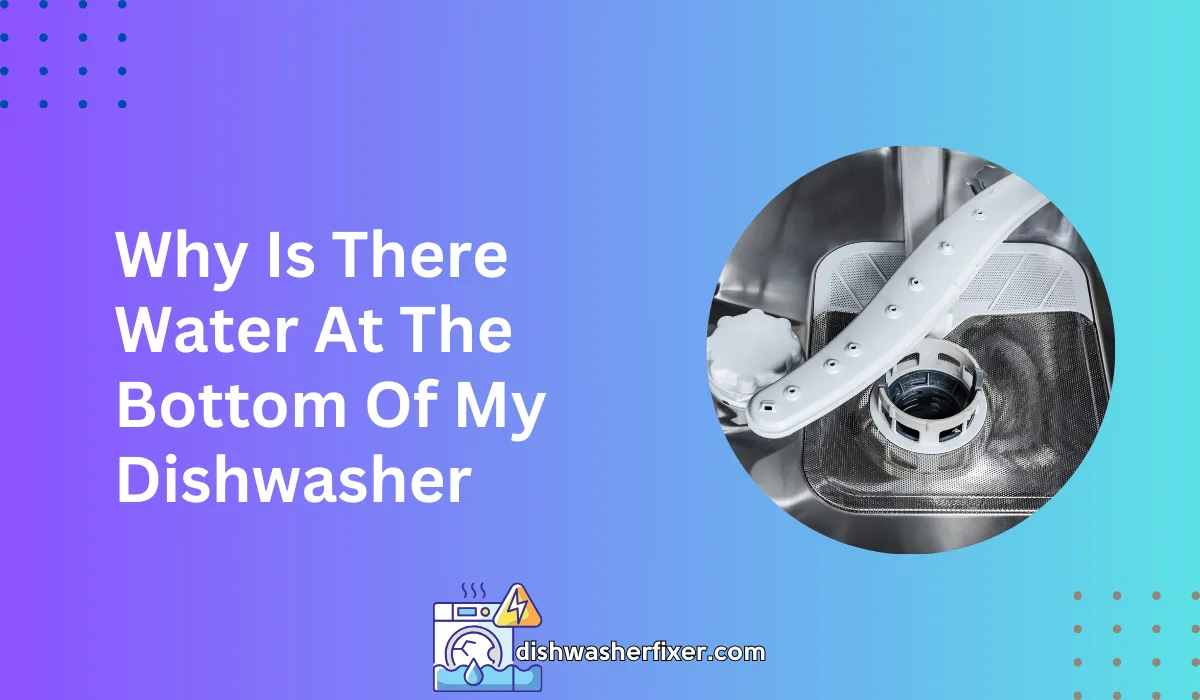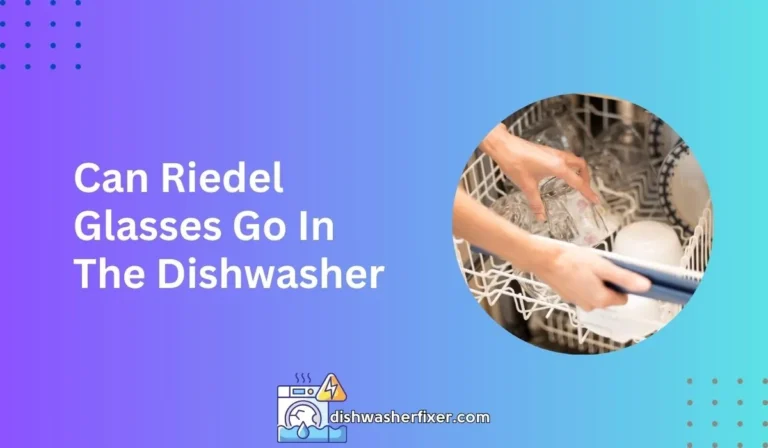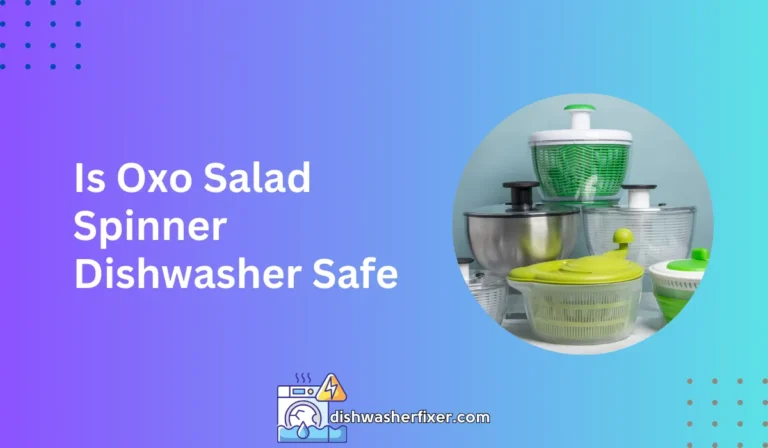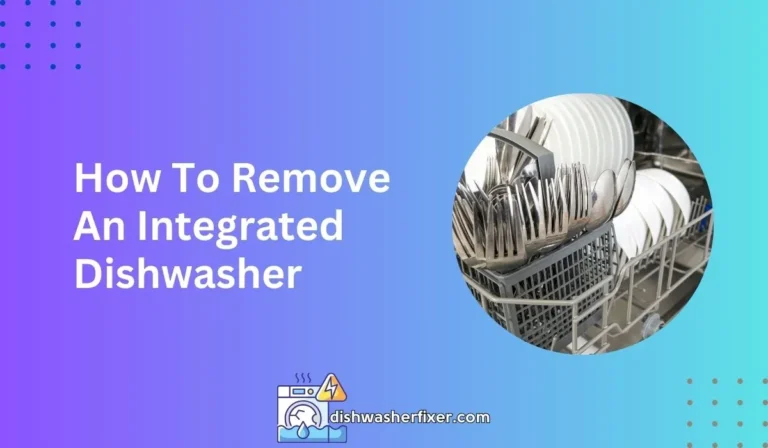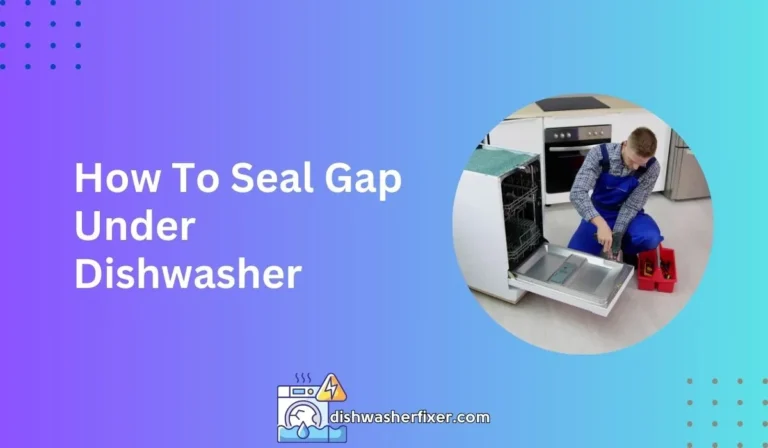Why Is There Water at the Bottom of My Dishwasher? Quick Fixes!
Water at the bottom of your dishwasher may indicate a clogged drain hose, filter, or pump. It could also result from a malfunctioning check valve, preventing water from draining fully. Regular maintenance checks can help prevent such issues.
Common Causes of Water Pooling in Your Dishwasher
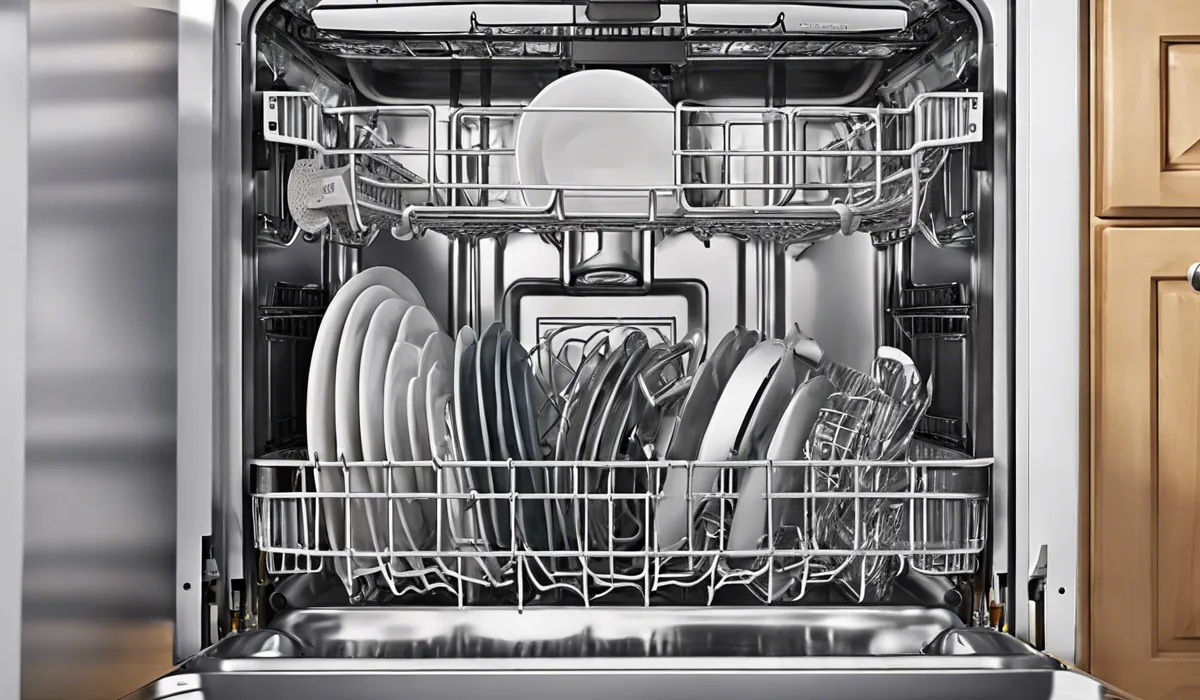
Residual Water Post-Cycle
If you notice a small amount of water at the bottom of your dishwasher after a wash cycle, this could be a normal part of the appliance’s operation.
Dishwashers are designed to retain some water to ensure that the seals remain moist and maintain their integrity. However, if the water level seems excessive, it may signal a problem.
Clogged Drain Filter or Garbage Disposal
A common culprit for water pooling is a clogged drain filter. Over time, food particles and debris can accumulate in the filter, preventing water from draining properly.
Similarly, if your dishwasher drains through the garbage disposal, a clog there can lead to a backlog. It’s essential to regularly clean both to maintain proper drainage.
Blocked or Malfunctioning Dishwasher Drain Hose
The drain hose is another hotspot for blockages. A kink or bend in the hose can restrict water flow.
Additionally, if the hose is dirty on the inside, it can cause water to back up into the dishwasher. Regular inspection and maintenance of the drain hose are crucial for preventing water pooling.
Faulty or Stuck Check Valve
The check valve prevents dirty water from re-entering the dishwasher after it has been drained out.
If this valve is stuck or not functioning correctly, water can return to the dishwasher tub, creating a pool at the bottom. It’s an essential part of the system that should be checked if you’re experiencing issues with water drainage.
Troubleshooting and DIY Fixes for Standing Water
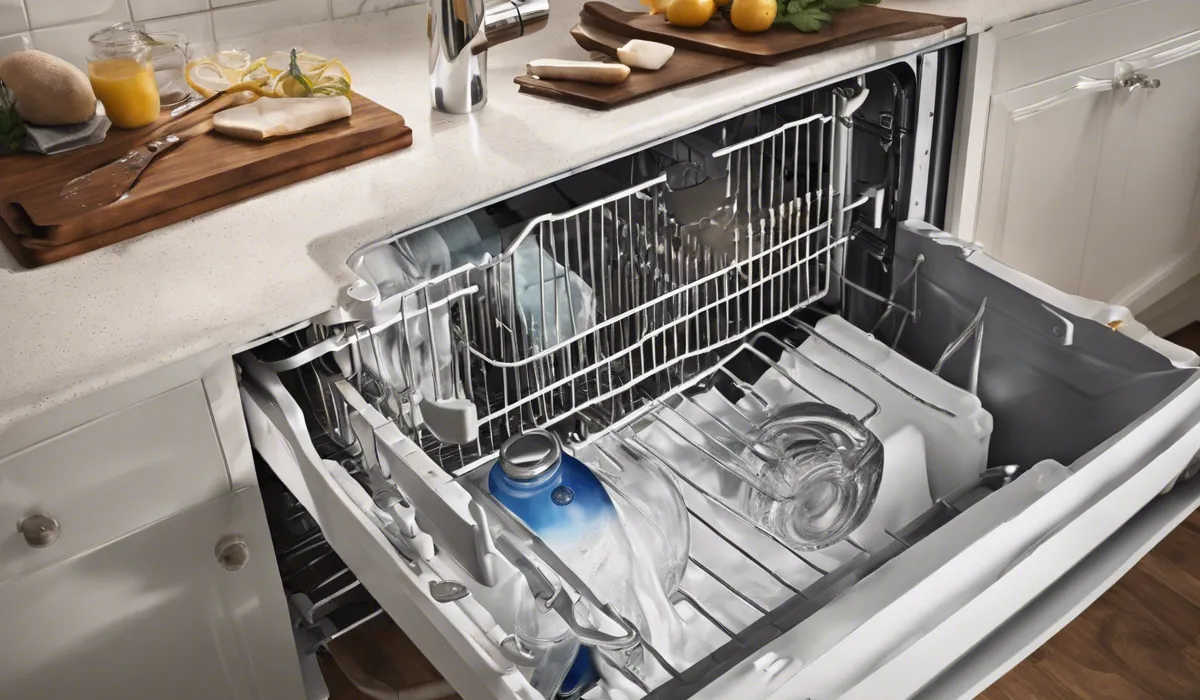
Checking and Cleaning the Filter
Begin by removing the filter according to the manufacturer’s instructions. Clean it under running water and use a soft brush to remove any debris.
If you’re unsure about how to properly maintain your dishwasher’s filter, checking the user manual or seeking guidance online can be helpful.
Inspecting and Unclogging the Drain Hose
Disconnect the drain hose and check for blockages. If you find any obstruction, gently remove it.
Be sure to also check for bends or kinks in the hose that could be causing issues. After clearing any clogs, reattach the hose securely to prevent leaks.
Running the Garbage Disposal to Clear Potential Blockages
If your dishwasher drains through the garbage disposal, make sure to run it regularly to prevent clogs.
Food debris can build up in the disposal, causing a blockage that backs up into the dishwasher. Regular use and cleaning of the garbage disposal will help keep the water flowing smoothly.
Testing the Check Valve for Proper Function
Locate the check valve and inspect it for any signs of damage or blockage. If it appears to be stuck, carefully attempt to free it.
However, if the valve is damaged, it may need to be replaced to ensure proper function and prevent water from pooling in the dishwasher.
Resetting the Dishwasher
Occasionally, a simple reset can solve minor electronic glitches in your dishwasher. Unplug the dishwasher or turn off the circuit breaker for a few minutes, then restore power. This can sometimes clear errors and get your dishwasher back in working order.
When to Call a Professional
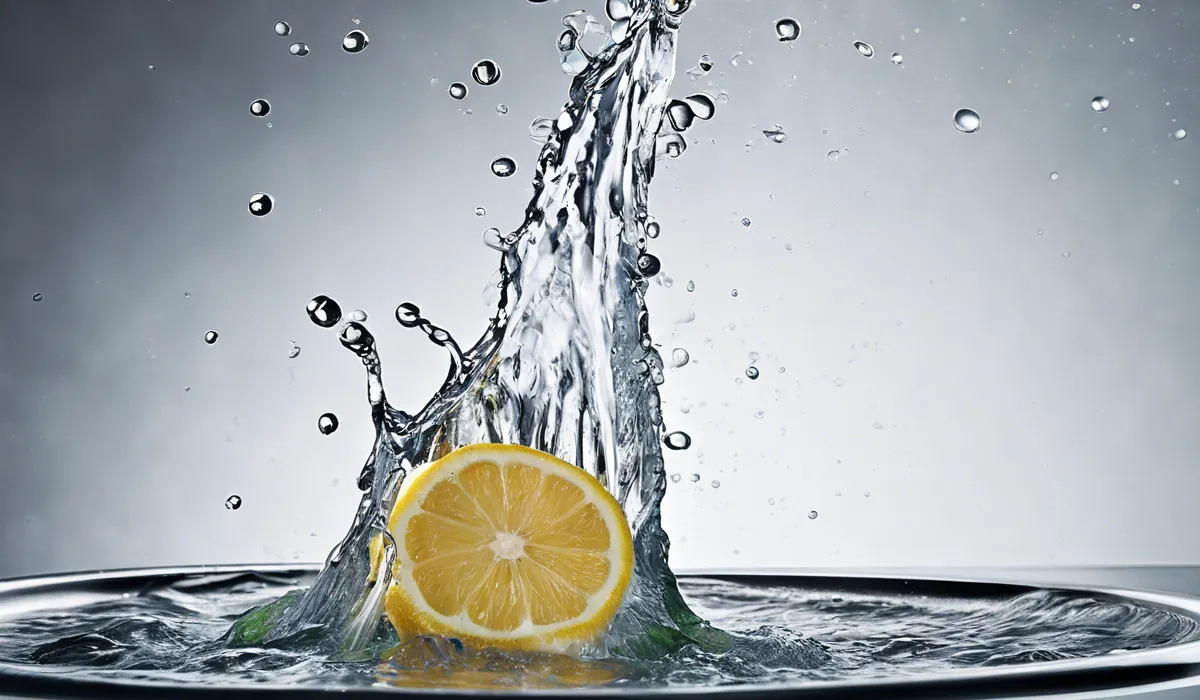
Persistent Water After Multiple Troubleshooting Attempts
If you’ve tried all the basic troubleshooting steps and still find water at the bottom of your dishwasher, it might be time to call in a professional. They can offer a more in-depth analysis and resolve issues that are not apparent to the average homeowner.
Signs of a Malfunctioning Pump or Motor
Unusual noises, failure to start, or incomplete cycles can indicate problems with the dishwasher’s pump or motor. These components are complex and often require the expertise of a trained technician to diagnose and repair.
Evidence of Leaks Leading to Water Accumulation
If you notice water leaking onto the floor around your dishwasher, this is a clear sign that something is wrong. Leaks can lead to water damage in your home and should be addressed immediately by a professional.
Complex Issues with the Dishwasher’s Internal Plumbing
Dishwashers have intricate internal plumbing systems. If there’s an issue beyond a simple clog or blockage, a professional will have the tools and knowledge to repair it correctly and safely.
Warranty Considerations and Avoiding Unintentional Damage
If your dishwasher is still under warranty, attempting DIY repairs could void it. Always check your warranty terms and, if in doubt, contact a professional to maintain coverage.
Additionally, a professional can ensure that repairs are done without causing further damage to your appliance.
FAQs About Water at the Bottom of Your Dishwasher
Why is there water at the bottom of my dishwasher after a cycle?
Water at the bottom of your dishwasher after a cycle may be due to a clogged drain hose or filter, a faulty pump, or a malfunctioning check valve that is not allowing the water to drain properly.
How can I prevent water from pooling at the bottom of my dishwasher?
Prevent water from pooling by performing regular maintenance checks, cleaning the filter, ensuring the drain hose is not kinked or clogged, and checking that the pump and check valve are functioning correctly.
Could a clogged filter be the reason for water in the bottom of my dishwasher?
Yes, a clogged filter could restrict water from draining and result in water pooling at the bottom of your dishwasher.
What should I check if my dishwasher isn’t draining water?
If your dishwasher isn’t draining, check the drain hose for clogs, inspect the filter for debris, and ensure the pump and check valve are operational.
Can a malfunctioning check valve cause water to remain in my dishwasher?
Yes, a malfunctioning check valve can prevent water from draining out of the dishwasher, leaving water at the bottom.
Final Thoughts
Water pooling at the bottom of a dishwasher typically suggests blockages in the drain hose, filter, or pump. Alternatively, a faulty check valve may be hindering proper drainage.
To avert such issues, routine maintenance checks are essential for ensuring these components function correctly and water drains as intended.
